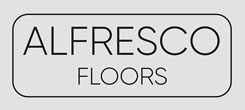
05 May The Use of Non-Combustible Materials: What the Law States

As we are all aware, Building Regulations have prohibited the use of combustible materials in external walls on “relevant buildings” and “specified attachments” above 18 metres (and potentially soon to be 11 metres); these regulations have been in place since December 2018. Despite this, however, there is still uncertainty surrounding the nature of these requirements.
This blog sets out to clarify current legislation surrounding the use of non-combustible materials in high-rise buildings.
Checking Fire Performance Characteristics of Materials
Architects, specifiers – and any individual responsible for the sourcing of materials – should carefully check fire performance characteristics on key products making up the external wall construction.
Additionally, you should seek certification for fire performance on any ‘specified attachment’ in detail. It’s important to note, however, that materials classified as A1 Fire-Rated do not require a fire rating certificate.
The European Classification System For Fire Performance
The introduction of the European Classification System ensures a common method for comparing the reaction to fire performance of construction products across a wide range of European countries.
For wall and ceiling insulation, materials are given a Reaction to Fire Classification of either A1, A2, B, C, D, E and F; ‘A1’ and ‘A2’ are defined as non-combustible, with ‘F’ highly combustible.
Alongside this, there is additional criteria that provides information on a product’s tendency to produce smoke and flaming droplets or particles. This is measured by three smoke intensity levels: s1, s2 and s3, with s3 being the most intense.
Additionally, burning droplets/particles are measured for Reaction to Fire classes A2 to E. There are three classes of burning droplets: d0, d1 and d2, with d2 being the worst.
To paraphrase Fire safety: Approved Document B, Regulation 7 (2),
Materials in an external wall or specified attachment (including balconies and sun shading) [should] have European classification A1 or A2-s1,d0 (for relevant buildings over 18 metres), including where the project is change of use.
Taking this into consideration, it’s crucial that specifiers working on high rise projects should source materials with an A1 or A2 fire-rating.
As previously stated, A1-rated materials do not require a fire-rating certificate. Within the Euroclass System, the category ‘no contribution to fire’ was established with a view to covering products which do not need to be tested for their reaction to fire. Examples of such materials are aluminium, steel, natural stone, concrete and ceramics.

What Is The Difference Between A1 and A2 Fire Rating?
Whilst both A1 and A2 falls into the ‘non-combustible’ category and can thus be specified in high rise buildings, there is a slight difference between the two ratings.
A1-rated materials cannot contribute to a fire at any stage, including a fully developed fire. Therefore, this would never be combined with additional classification.
A2-rated materials, on the other hand, may produce no contribution to fire but such materials do have potential to produce some smoke or flaming droplets. This is then followed by an additional classification for smoke and droplets – as mentioned above.
When comparing A1 and A2-rated materials, the key difference is the production of smoke – which is apparent in A2-rated materials.
Both A1 and A2 materials are classified as non-combustible – and as such can be specified for external applications and specified attachments.
Class A Fire-Rated Materials: Some Examples
For architects, designers and specifiers working on a ‘specified attachment’ such as a balcony, walkway, terrace, roof or winter garden, it’s important to understand the different materials that are classified as A Fire-Rated. The following materials/products all fall into the A-rated category:
Class A Fire-Rated Pedestals and Subframes For High-Rise Projects
When working on a specified attachment for a high-rise project, it’s crucial that all components of the flooring are A-rated – meaning that pedestals and subframes should be non-combustible, too.
In this instance, we recommend a pedestal made from 100% A!-rated materials, such as the A-PED™ and a subframe such as the REIF DuraLink® system.
When used alongside the surface materials mentioned above, you are providing a fully A-rated solution.
Conclusion
Now, more than ever, there’s a need to provide a solution driven by safety to ensure that mistakes from the past remain in the past.
With the new Building Regulations in play, it’s crucial that we all sing from the same hymn sheet, and our aim is to help aid the specification process for any high-rise project.
For more information, fill out the form below or talk directly with one of our experts on 020 8977 0904




Pingback:What Surface Materials are Best for Fire-Rating Compliance? - Alfresco Floors
Posted at 12:32h, 28 May[…] Non-combustible materials are classified as Class A Fire-rated – as outlined by the Euroclass system. To find out more on this subject, read our previous blog. […]
Pingback:Fire Ratings For External Floors Explained - Alfresco Floors
Posted at 10:15h, 26 June[…] THE USE OF NON-COMBUSTIBLE MATERIALS: WHAT THE LAW STATES […]
Pingback:Why is Class A Decking Important? - Alfresco Floors
Posted at 12:48h, 07 December[…] What’s The Difference Between Class A and Class B Rated Materials In Residential Buildings? The Use of Non-Combustible Materials: What the Law States […]
Pingback:What Surface Materials Deliver Class A Decking? - Alfresco Floors
Posted at 13:43h, 11 December[…] The Use of Non-Combustible Materials: What the Law States […]